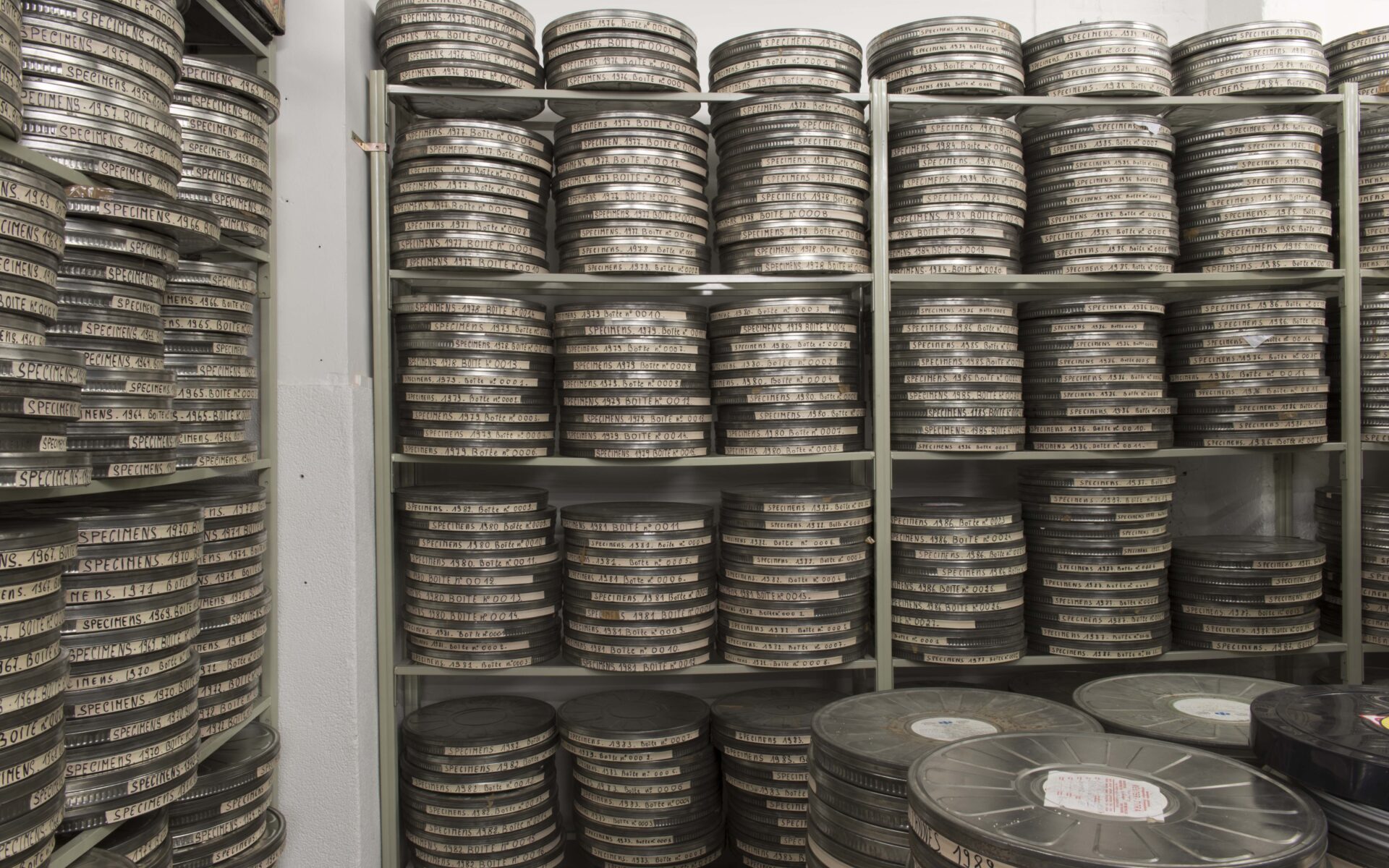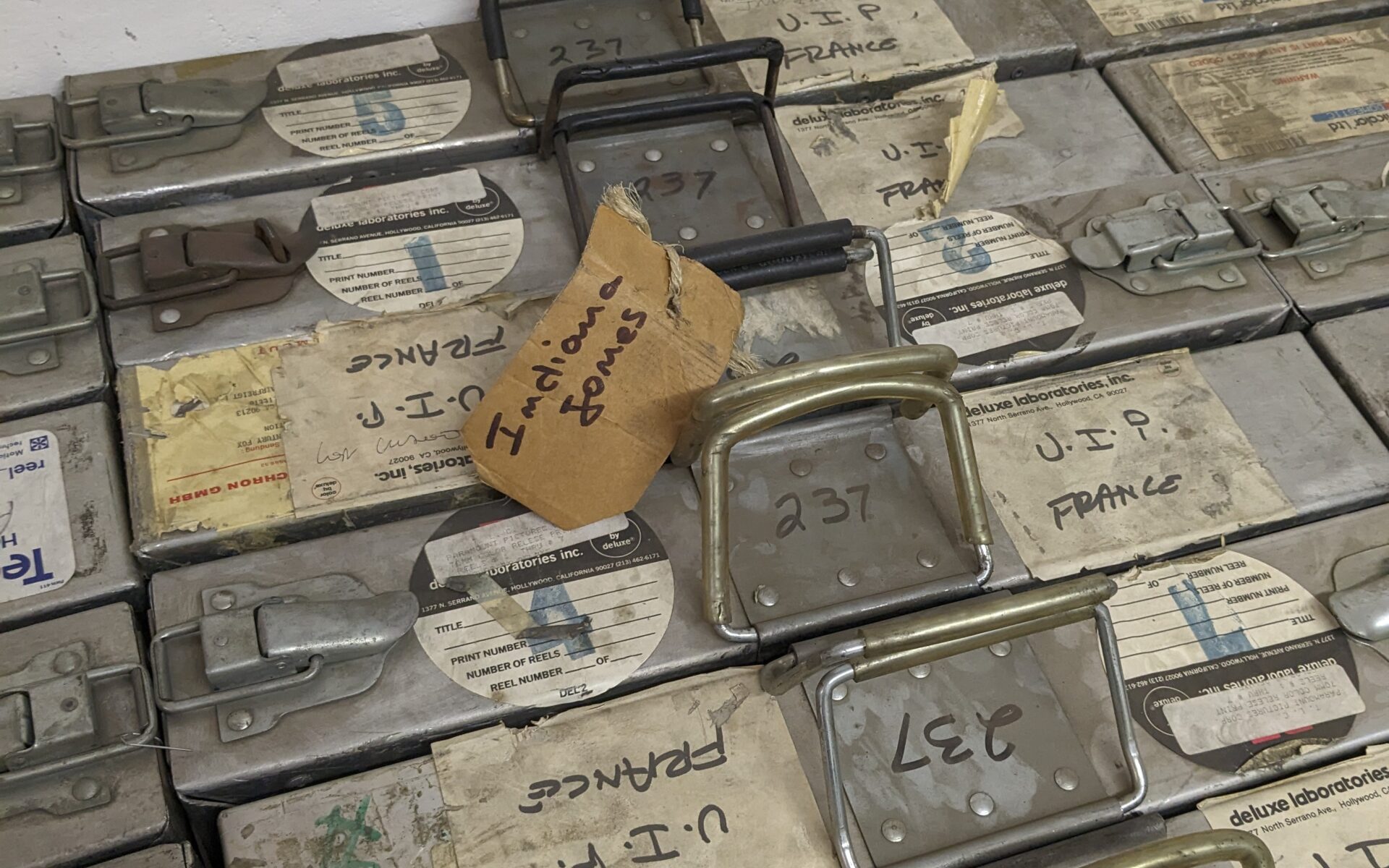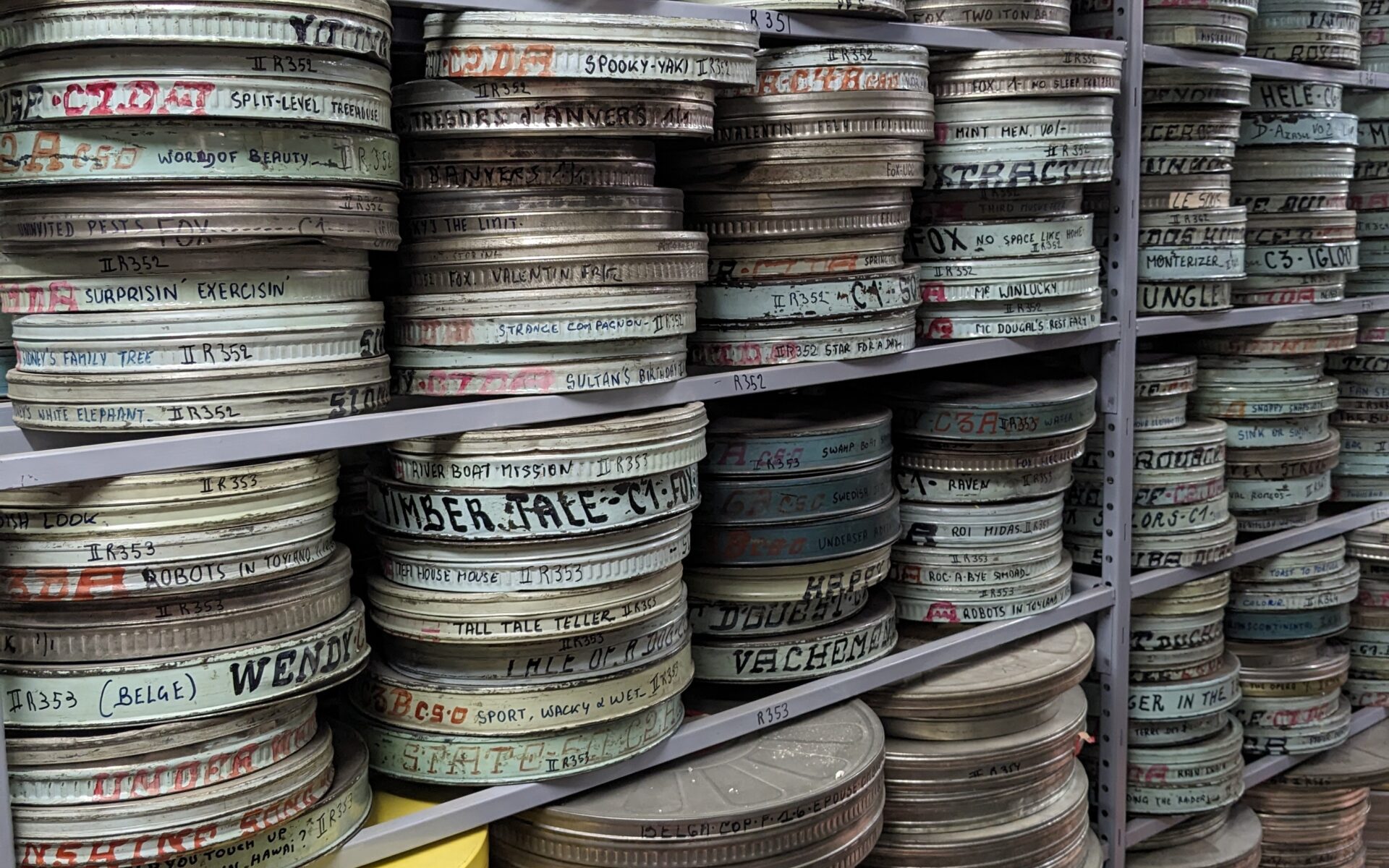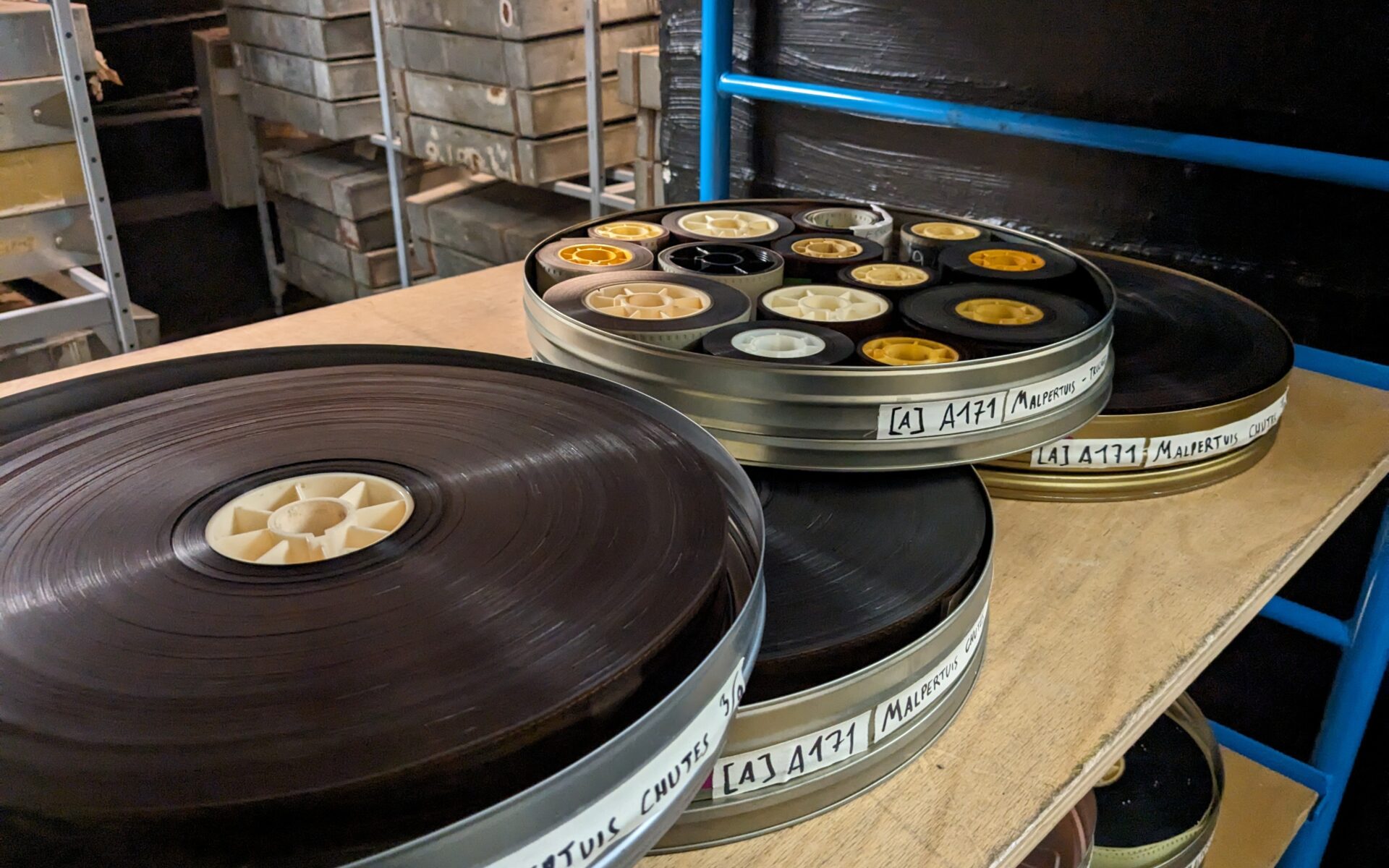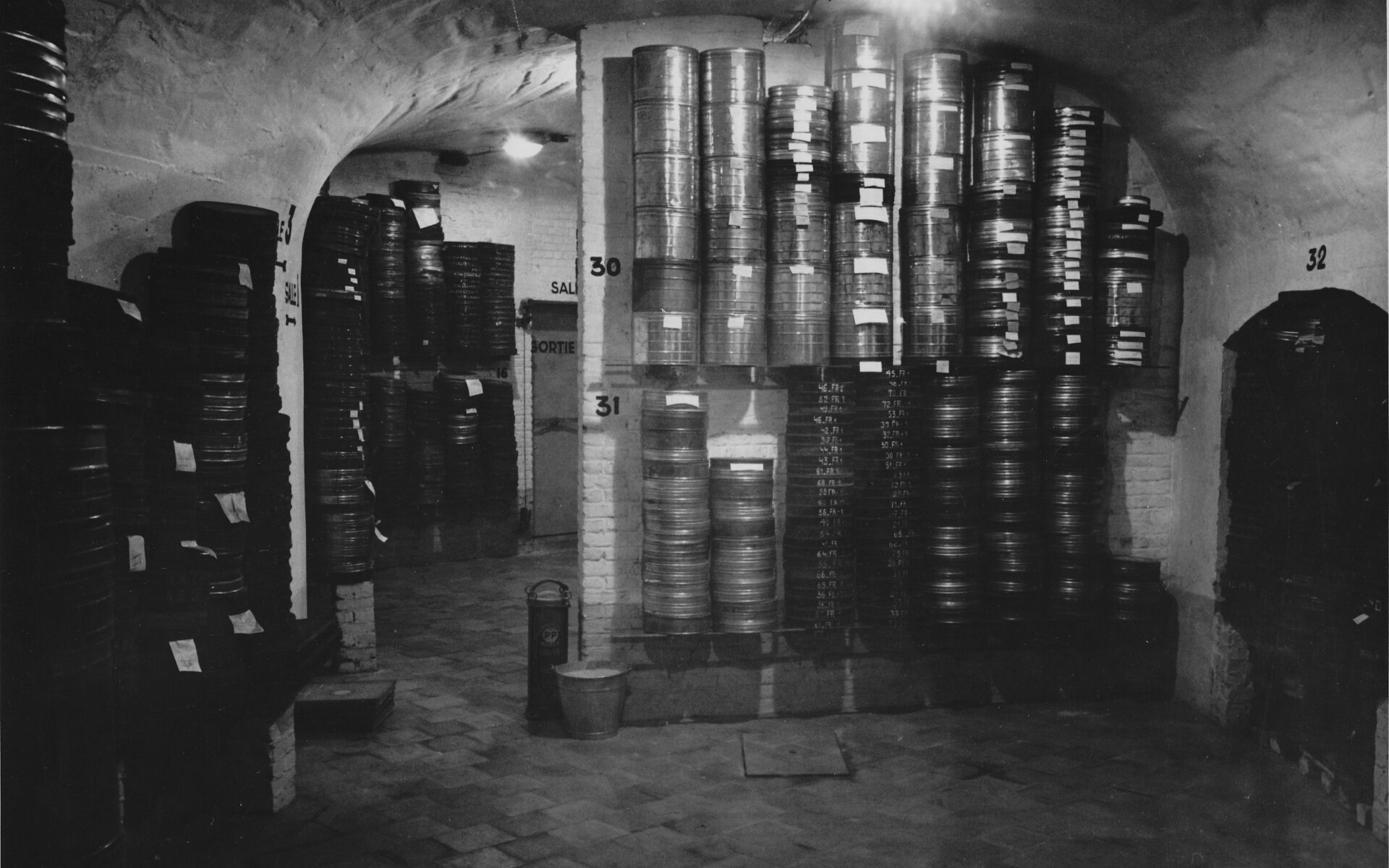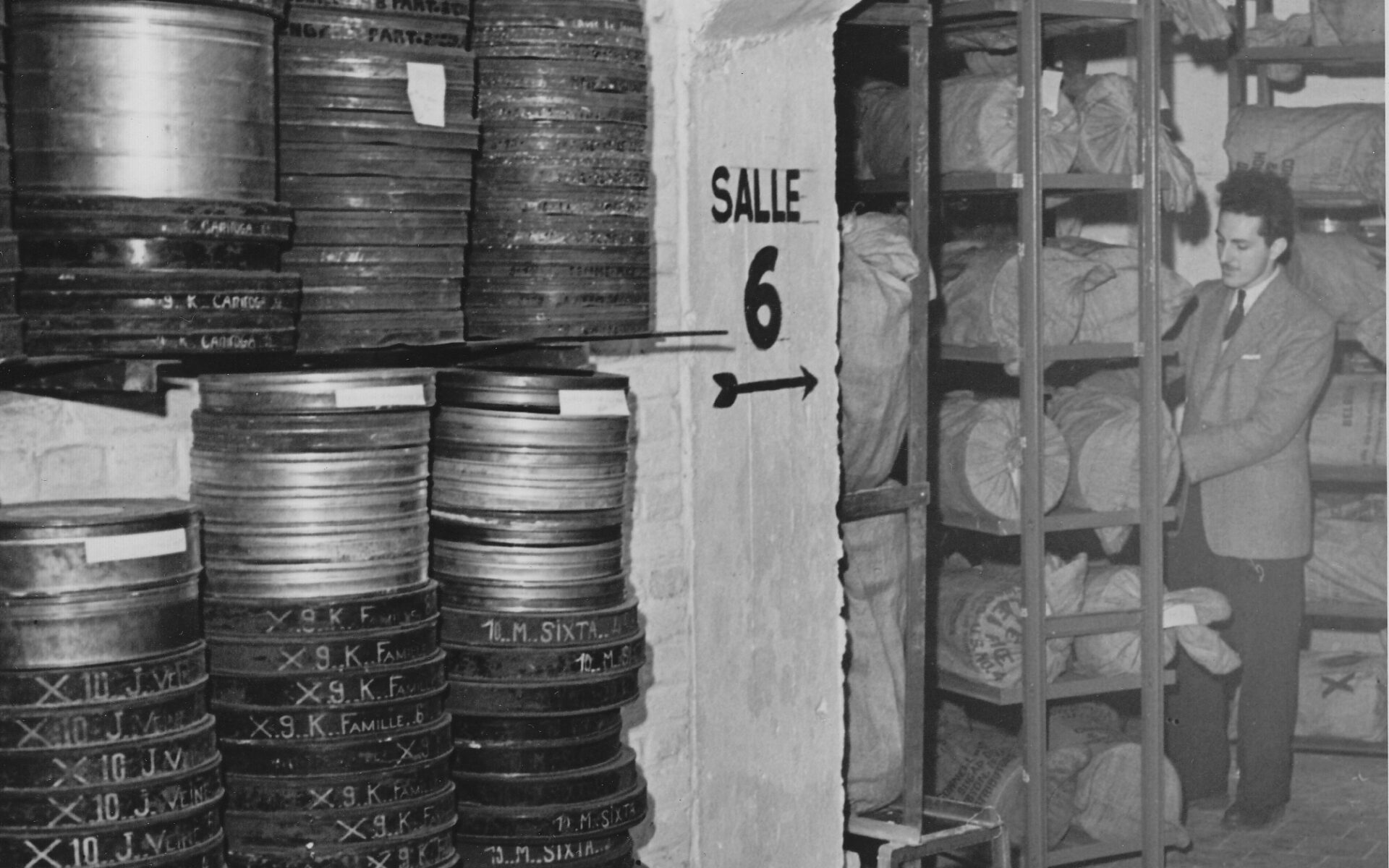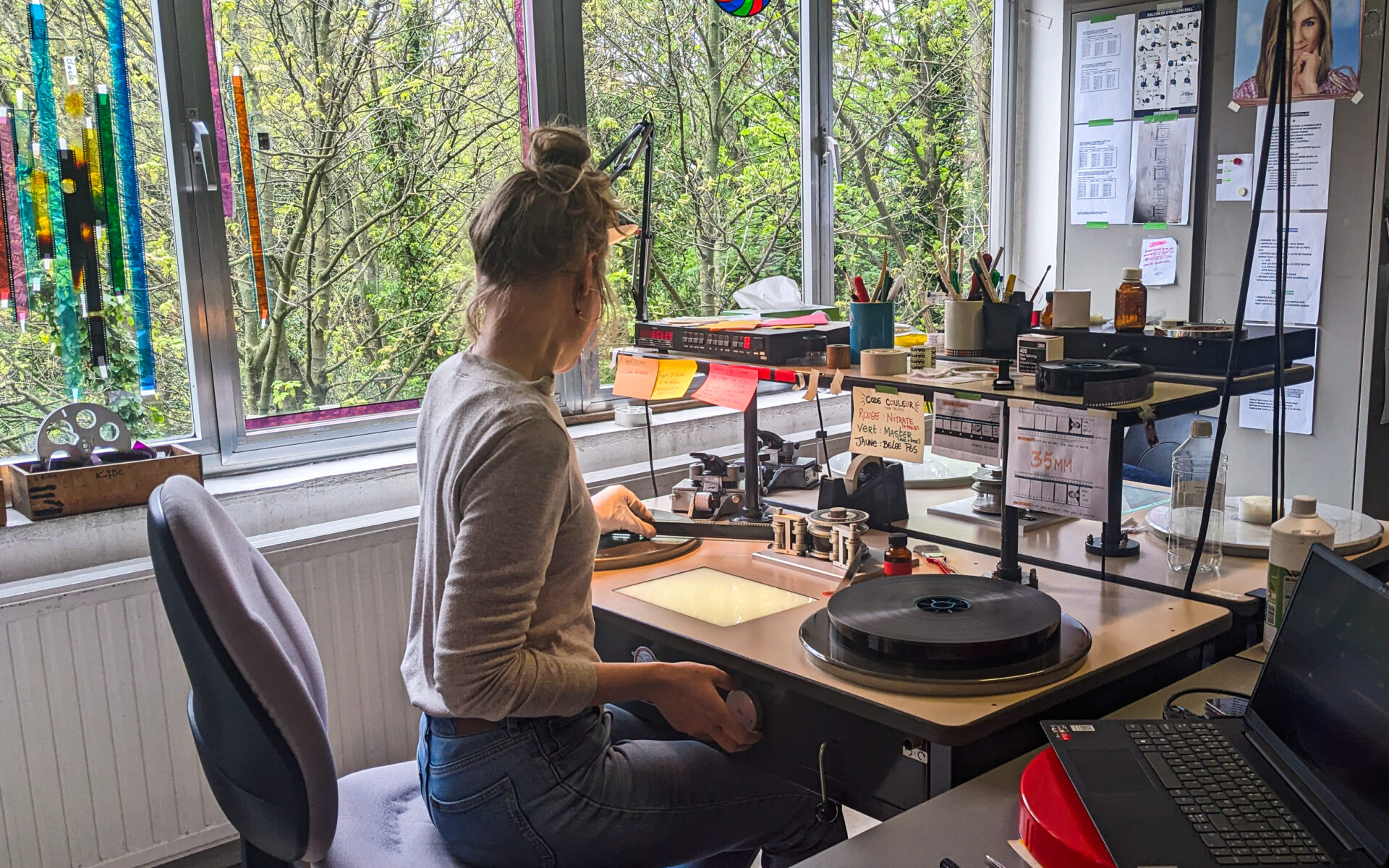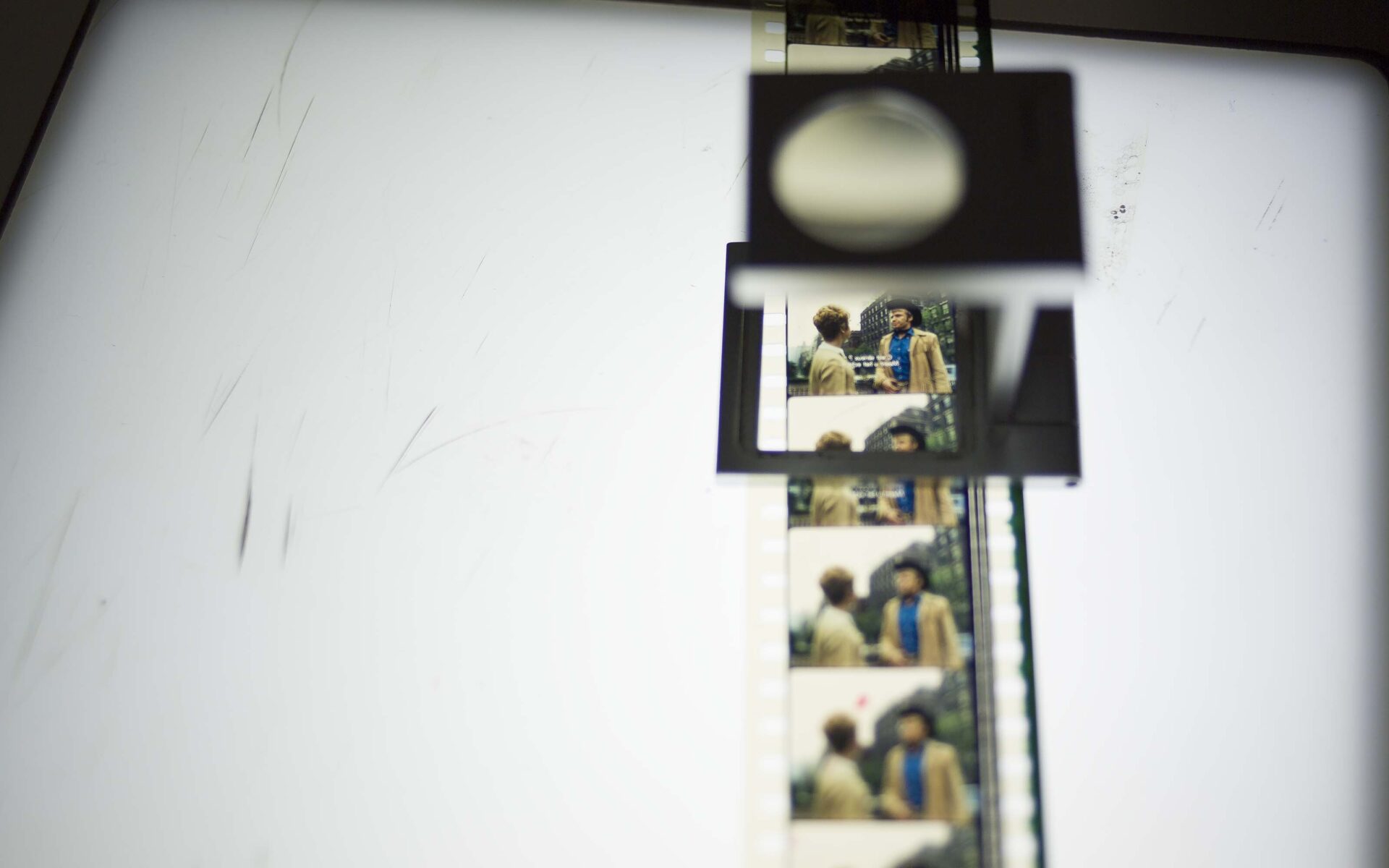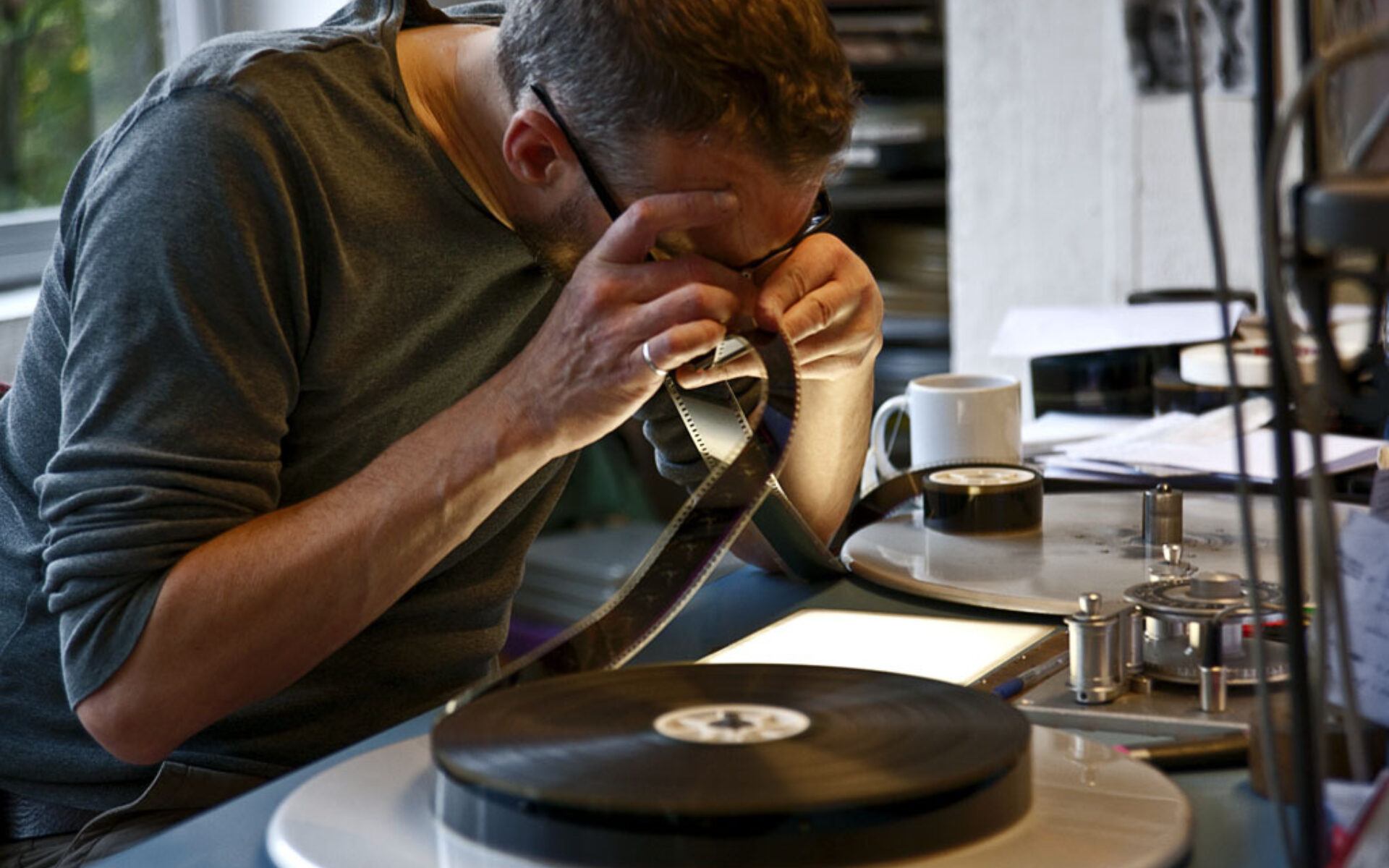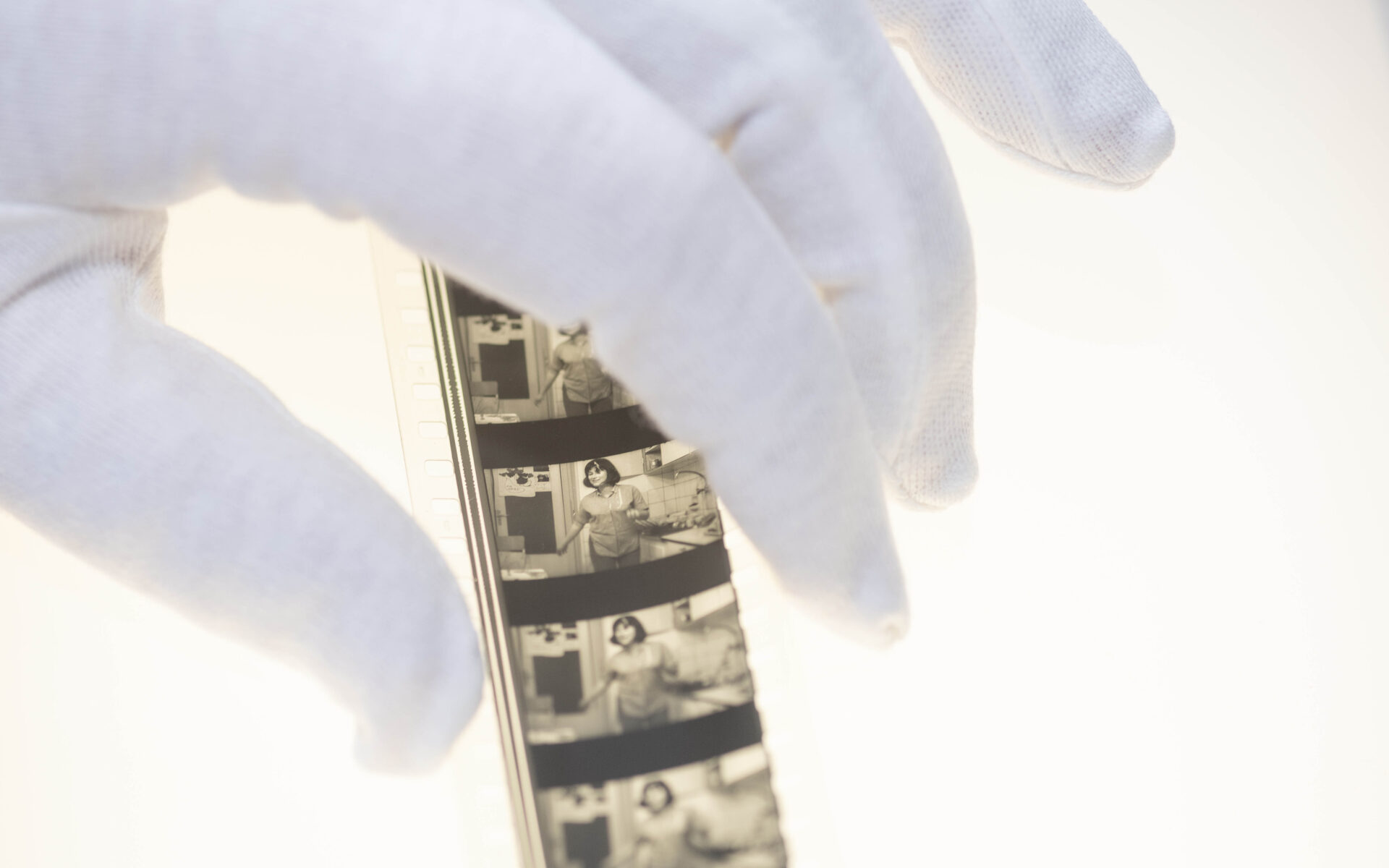CINEMATEK, Restauration
An (inter)national treasure.
The CINEMATEK film collection,
online immersive 3D tour
06.09 2024
The CINEMATEK film collection, an (inter)national treasure.
While most people can easily define what a museum or library is, understanding the purpose and mission of a “Cinémathèque” or Film Archive can be more complicated. What does the term “Cinémathèque” mean, and what role does it play? What happens behind its doors once the projectors are turned off and the audience has left? In two articles, CINEMATEK will explore its dual role – both as a museum and on its mission of preservation and restoration. We will share the history of our spaces and invite you to explore them through an online immersive 3D tour.
The public mainly knows CINEMATEK for its museum and daily screenings. But did you know that most of the films shown at CINEMATEK come from its own archives? This precious, fragile, and degradable heritage must be preserved under optimal conditions to prevent it from succumbing to the ravages of time. Over the past century, the mission of film archives has evolved: it is no longer just about preserving audiovisual heritage but also about saving it. In the 1930s, the focus was primarily on preventing the near-total destruction of silent films (it is estimated that around 80% of early cinema production (1895-1914) has disappeared). Over time, and with the advent of digital technology, as the film industry has almost entirely digitized, the conservation mission of film archives has expanded into the digital realm, while continuing to preserve film on celluloid. In this context, the invaluable nature of physical media becomes even more evident when faced with the challenges of long-term digital file preservation. A digital film must be continuously copied, transferred, and backed up in various formats, which themselves need to be regularly updated to remain compatible with the latest standards, thus avoiding media obsolescence. In contrast, a film on celluloid stored under proper conditions can be preserved for hundreds of years.
CINEMATEK preserves and restores both Belgian and international films, including fiction films, documentaries, newsreels, short films, advertisements, trailers, as well as artists' films, avant-garde works, and other experimental films.
Today, CINEMATEK has several warehouses or “depots”, where both the film collection and projection equipment, along with other objects and documents related to cinema and its history, are stored. CINEMATEK invites you to explore its vibrant core and discover one of the richest film collections in the world.
Originally, The Royal Film Archive of Belgium had several depots scattered throughout Brussels, located in underground spaces such as beneath Place du Luxembourg, Rue des Ursulines, under the former Brigittines train station, Avenue Poincaré, and Galerie Ravenstein. Today, the film collection is divided and spread across three buildings: two in Brussels, where the majority of the collection is archived—one in a former automobile garage and the other in a former cigarette factory. For nitrate film copies, which are highly flammable and thus cannot be stored in densely populated areas, CINEMATEK has a third depot in the province of Namur, safely located in a former Belgian army bunker. These depots house approximately 260,000 copies of 80,000 films under specific conditions: protected from light, air, and dust, and maintained at precise temperatures and carefully controlled relative humidity.
Archiving cinema primarily involves preserving boxes that contain film reels, which hold the images of the films. These reels are made from various materials (some are cellulose, others are polyester) and come in different formats (ranging from 8 mm to 16 mm, 35 mm, and even 70 mm). A film reel typically represents about twenty minutes of footage. At CINEMATEK, this translates to tens of thousands of boxes, carefully stored on shelves stretching as far as the eye can see. The main depot alone covers an area equivalent to four football fields.
The films preserved by CINEMATEK are mainly shown in its own screening rooms. However, films from the collection are also regularly presented in other cinemas, festivals, and film archives that turn to CINEMATEK to borrow copies of films stored in the depots. The same applies to researchers, exhibition curators, and producers or directors of documentaries and news programs who contact CINEMATEK to obtain archival footage. These factors make CINEMATEK an essential reference point in Belgium for the history of cinema and film heritage.
The activities of digitizing and restoring films in the collection also play a crucial role in providing digital access to these films.
CINEMATEK a créé une visite virtuelle de deux rayonnages de son dépôt principal. Une opportunité unique pour les cinéphiles d’entrer dans nos archives et de traquer l’un ou l’autre des nombreux trésors qui composent nos collections, tel que par exemple le seul internégatif de Citizen Kane d’Orson Welles ou encore l’une des premières copies de Viridiana avant l’interdiction du film par Franco.

A film archive works continuously to make sure the public can continue to enjoy these works. In the past, cinema wasn’t always given the attention it deserves, and once films were no longer in use, they were often destroyed. Without the dedicated and sometimes invisible efforts of film archives over nearly a century, much of cinema’s history would be lost. Today, in 2024, the challenge has changed but remains significant: film archives are essential for preserving, continuing, and sharing the memory of cinema.
Les 2 visites 3D…
- This virtual tour was created with the support of visit.brussels.

